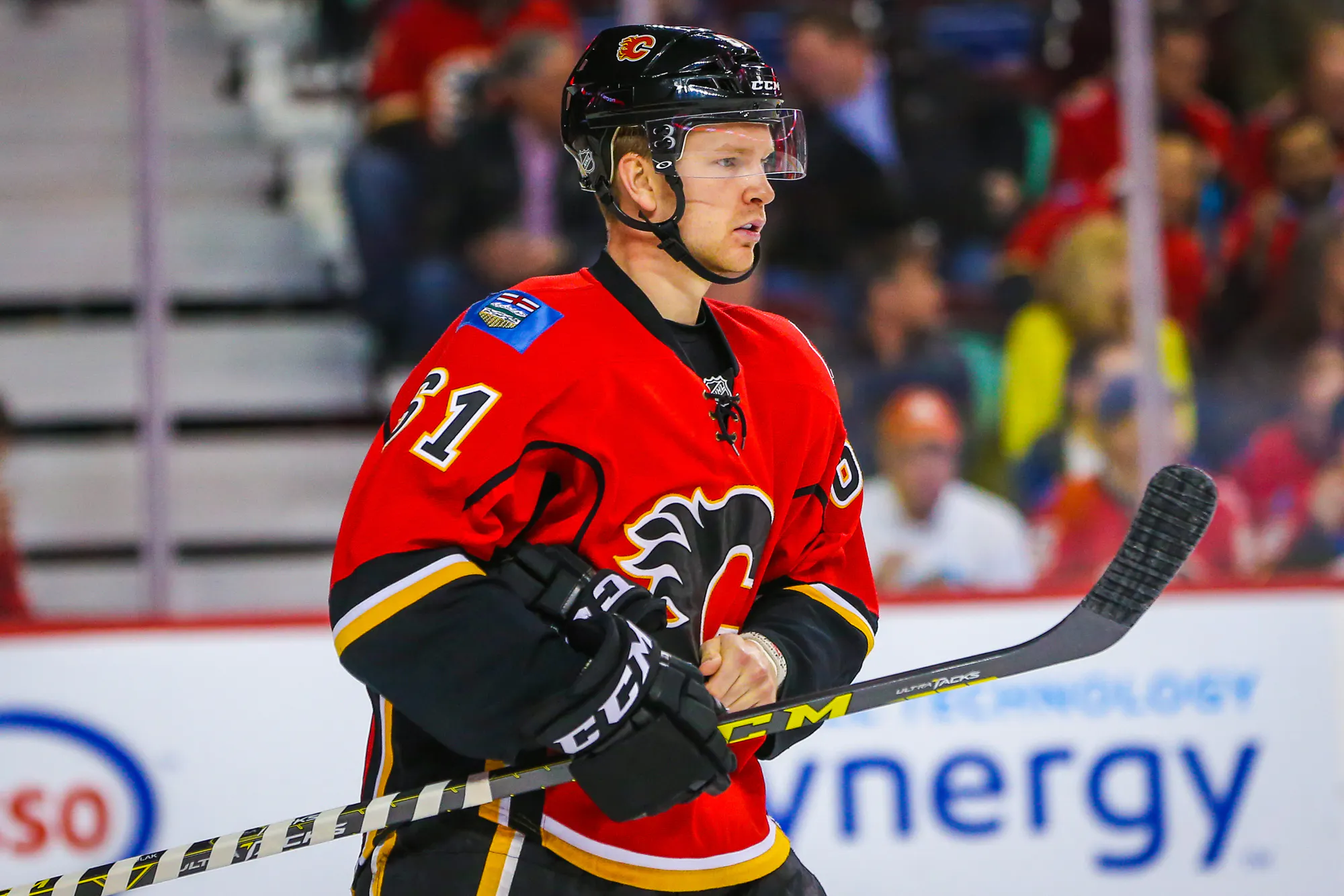FlamesNation player evaluation: Brett Kulak

By Ryan Pike
5 years agoAside from fellow 2012 pick Mark Jankowski, there may be no better recent story of internal drafting and development by the Calgary Flames than defenseman Brett Kulak. Selected in the fourth round of the 2012 NHL Draft, Kulak has progressed gradually from WHL standout to ECHL standout to AHL standout to fringe NHLer to, this past season, everyday NHL player.
A third pairing stalwart for the entire season, Kulak is good at everything but arguably not great at anything. In other words, he’s established himself as almost the ideal third pairing blueliner.
2017-18 season summary
After a 2016-17 campaign that saw him sit in the press box a lot during his NHL stint, Kulak was a healthy scratch for the first seven games of 2017-18 in favour of Matt “Bort” Bartkowski. But Kulak made his season debut on Oct. 21 and from then on only sat four times (two of those scratches were on the second half of back-to-backs). Needless to say, he grabbed hold of his opportunity and never really relinquished it. His play cemented himself as the undisputed sixth defender – in both ice time and other box-cars – as well as the undisputed third best left-shot defender in the organization.
| Games played | Goals | Assists | Points | TOI/GP | 5v5 CF% | 5v5 CF% rel | OZS% | PDO |
| 71 | 2 | 6 | 8 | 12:59 | 52.34% | -2.28% | 51.61% | 0.986 |
Kulak played 71 games, a career high, and hit career highs in every other area. He played exclusively on the Flames’ third pairing, primarily with Michael Stone, though he moved up the rotation when TJ Brodie missed time at the end of the season with an injury. (Granted, it was the season’s garbage time, but Kulak looked good.)
Kulak was sheltered quite a bit, playing with the Flames’ third and fourth lines against the other team’s third and fourth lines – and other than Mark Giordano and Dougie Hamilton, he had the highest offensive zone start rate of any defender on the team. That said, he performed well: other than Giordano and Hamilton, he had the best Relative Corsi of any defenseman.
When you break down Kulak’s game to its two constituent elements, he’s arguably even more impressive. He was third among the team’s defensemen in Corsi For Per 60 Minutes (behind Giordano and Hamilton) and fourth in Corsi Against Per 60 Minutes (behind Giordano, Hamilton and Hamonic). He’s definitely sheltered, but his numbers have been very good in his role. He didn’t generate a lot of offense, but playing with the Flames’ bottom two lines generally wasn’t a recipe for offensive success this past season.
Kulak primarily played with Stone, but also played a bit with Hamonic – in the rare situations where Glen Gulutzan decided to split up Brodie and Hamonic – and seemed to do well. The (limited) data suggests that Kulak’s numbers were better away from Stone: +4% Relative Corsi away from him, compared to -0.6% with him.
Compared to last season
Kulak played 21 games in 2016-17 and wasn’t fully trusted as a third pairing regular, even though he had strong results when he did play with Deryk Engelland. This season, he was markedly better than Bartkowski and spent the whole season in the NHL, suiting up for 71 games. It was his first full year and he was essentially setting his baselines for his career, but given what he had to work with – Stone and the third and fourth lines – he did as well as he should’ve been expected to perform.
What about next season?
Kulak’s a pending restricted free agent. He’ll most likely be back and probably gets a modest raise from last season’s league minimum ($650,000) deal – he doesn’t have the offensive numbers on his side, but his progression and responsible play will get him a bump. Moreover, he’s likely a shoo-in to start on the third pairing, but depending on what happens elsewhere on the blueline he could move around, too.
It’s completely possible that Kulak is moved or replaced this summer, too. But he’s really inexpensive and versatile, so it’s likely that any blueline tinkering is done elsewhere and he’ll be bounced around to fill in the gaps.
| #5 – Mark Giordano | #7 – TJ Brodie |
| #8 – Chris Stewart | #10 – Kris Versteeg |
| #11 – Mikael Backlund | #13 – Johnny Gaudreau |
| #15 – Tanner Glass | #18 – Matt Stajan |
| #19 – Matthew Tkachuk | #20 – Curtis Lazar |
| #21 – Garnet Hathaway | #23 – Sean Monahan |
| #24 – Travis Hamonic | #25 – Nick Shore |
| #26 – Michael Stone | #27 – Dougie Hamilton |
| #33 – David Rittich | #36 – Troy Brouwer |
| #41 – Mike Smith | #44 – Matt Bartkowski |
Recent articles from Ryan Pike





